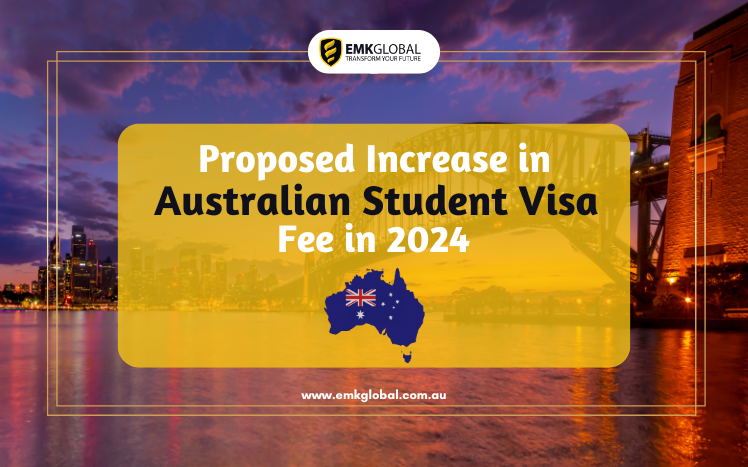The Australian Government’s student visa program is a vital pillar of the international education sector, aimed at delivering top-notch education and academic excellence to overseas students. However, recent reports have highlighted challenges posed by record numbers of temporary migrants and overseas students, sparking discussions about the impact on education quality.
The New Migration Strategy
Released on December 11, 2023, the New Migration Strategy outlines actions to enhance the standard and integrity of Australian overseas education. The Department of Home Affairs is actively working towards reducing the number of international students, with spokesperson Clare O’Neil emphasizing the goal of restoring integrity to international education.
Proposed Fee Hike and Policy Intent
One significant measure being considered is raising Australian student visa fees from $710 to $2,500. This move aligns with the government’s policy intent to reduce the size of the international education sector, as stated by Tray Williams, chief executive of the Independent Tertiary Education Council Australia.
Stakeholder Perspectives and Concerns
While discussions on fee increases continue, stakeholders like Phil Honeywood express concerns about the potential impact on Australia’s competitiveness. The non-refundable nature of these fees also raises equity issues for students facing visa rejections, as highlighted by Simon Costain and Abul Rizvi.
Impact on Job Opportunities and Competitiveness
Increasing visa fees could have repercussions on job opportunities, especially for Australians supporting international students. Grattan Institute’s Brendan Coates and Trent Wiltshire believe the fee hike could deter students pursuing lower-value courses, but Abul Rizvi warns of scaring away top-tier students who have other affordable options.
Balancing Short-Term Gains and Long-Term Goals
Critics argue that the fee hike might not effectively address the desired reduction in student numbers and could deter valuable talent. They suggest focusing on attracting high-quality students and addressing skills gaps rather than increasing costs.
Final Thoughts and Conclusion
The debate over Australian student visa fees reflects broader policy challenges, including balancing economic needs, educational quality, and migration control. While the government’s priorities are shifting, the potential consequences of fee increases on talent attraction and educational excellence warrant careful consideration.
Conclusion
This article provides a structured overview of the key points regarding the proposed increase in Australian student visa fees, including stakeholder perspectives and potential impacts. Let me know if there’s anything specific you’d like to focus on or if you need additional information!
Q1: What is one of the significant measures being considered in the context of the New Migration Strategy?
A1: One significant measure being considered is raising Australian student visa fees from $710 to $2,500.
Q2: What concerns have been raised regarding the proposed fee hike?
A2: Stakeholders have expressed concerns about the potential impact on Australia’s competitiveness, equity issues for students facing visa rejections, and the potential deterrence of high-caliber students.
Q3: How do experts weigh the potential consequences of the fee hike?
A3: While some experts believe the fee hike could deter students pursuing lower-value courses, others warn of scaring away top-tier students who have other affordable options.
Q4: What is the suggested approach to address broader policy challenges related to student visas?
A4: Critics suggest focusing on attracting high-quality students, addressing skills gaps, and balancing short-term gains with long-term educational excellence goals.
Q5: What is the current status of the proposed fee increase?
A5: The proposed fee increase is still under active consideration and has not been confirmed yet.


